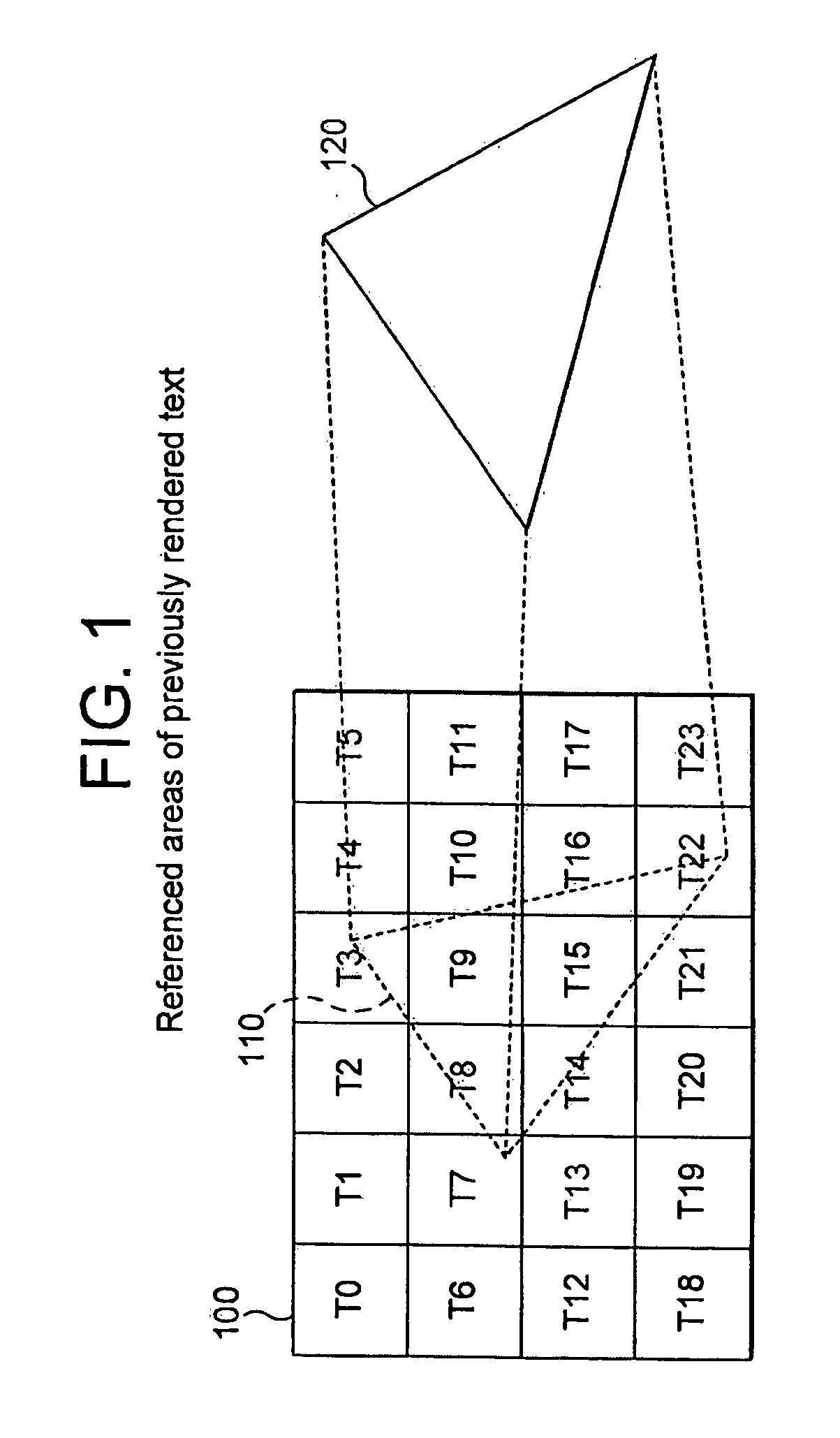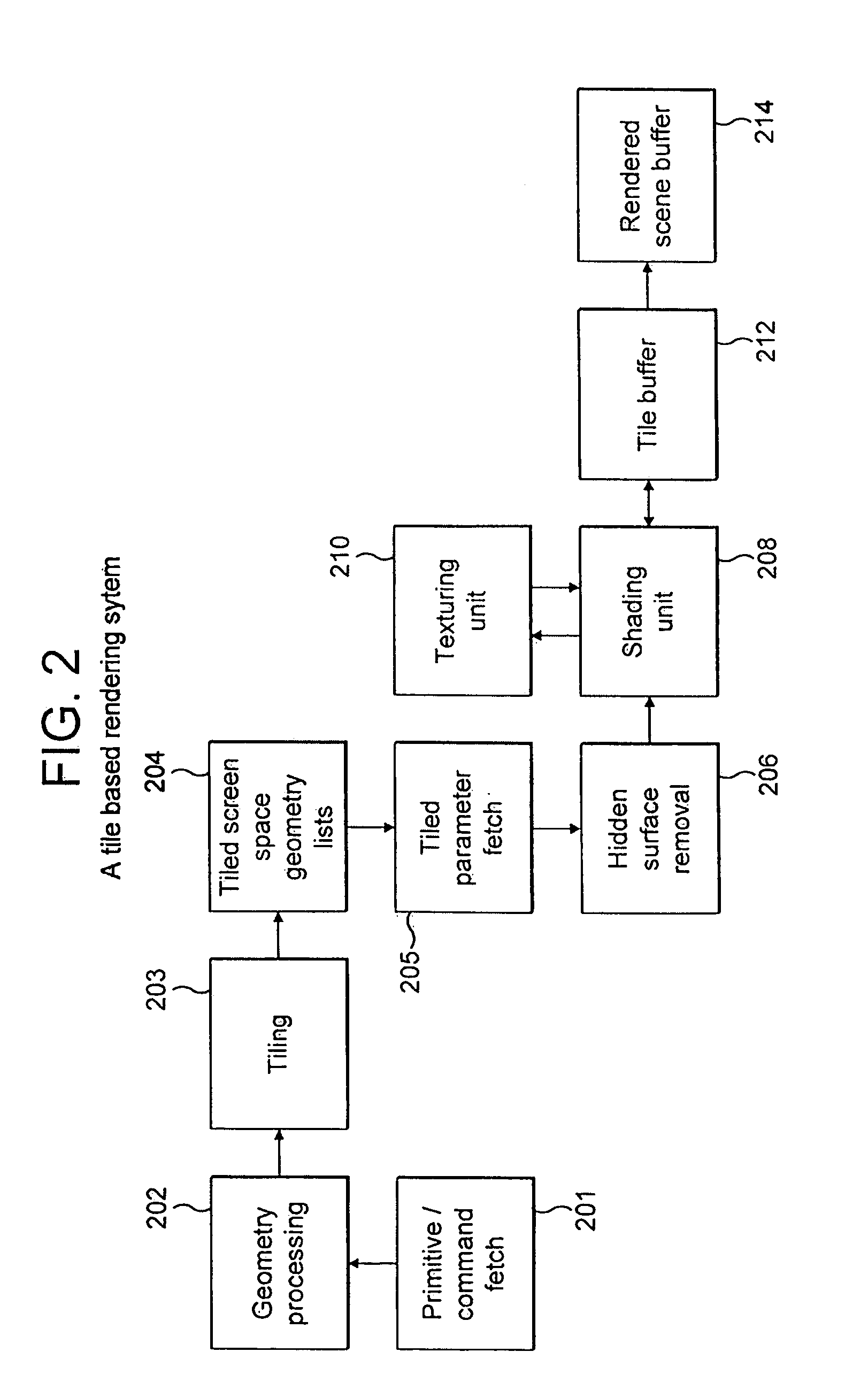Demand based texture rendering in a tile based rendering system
a tile and texture technology, applied in the field of three-dimensional computer graphics rendering systems, can solve the problems of reducing the memory bandwidth associated with both the rendering of textures and their subsequent use, and achieve the effect of reducing the memory bandwidth
- Summary
- Abstract
- Description
- Claims
- Application Information
AI Technical Summary
Benefits of technology
Problems solved by technology
Method used
Image
Examples
Embodiment Construction
[0018]FIG. 3 illustrates the operation of demand mode texture rasterisation in a tile based system. An application 300 first generates geometry 305 for an image which is to be rendered to a texture as in 100 in FIG. 1. This geometry is processed at 310 using well known techniques to produce screen space geometry that is passed to a tiling unit 315 which generates tile screen space parameters 320 as described for a tile based rendering system. It should be noted that the current state of each tile within the texture i.e. if it has been rendered is indicated by a valid flags table 358. This table is generally stored within memory and contains a status flag for each tile that indicates if it has been rendered, all flags are initially cleared to indicate that no tiles have been rendered. Each time a tile is rendered a flag corresponding to that tile is set.
[0019]The application then switches to the rendering of a main scene at 330 by producing main scene geometry 335 which is then proce...
PUM
 Login to View More
Login to View More Abstract
Description
Claims
Application Information
 Login to View More
Login to View More - R&D
- Intellectual Property
- Life Sciences
- Materials
- Tech Scout
- Unparalleled Data Quality
- Higher Quality Content
- 60% Fewer Hallucinations
Browse by: Latest US Patents, China's latest patents, Technical Efficacy Thesaurus, Application Domain, Technology Topic, Popular Technical Reports.
© 2025 PatSnap. All rights reserved.Legal|Privacy policy|Modern Slavery Act Transparency Statement|Sitemap|About US| Contact US: help@patsnap.com



